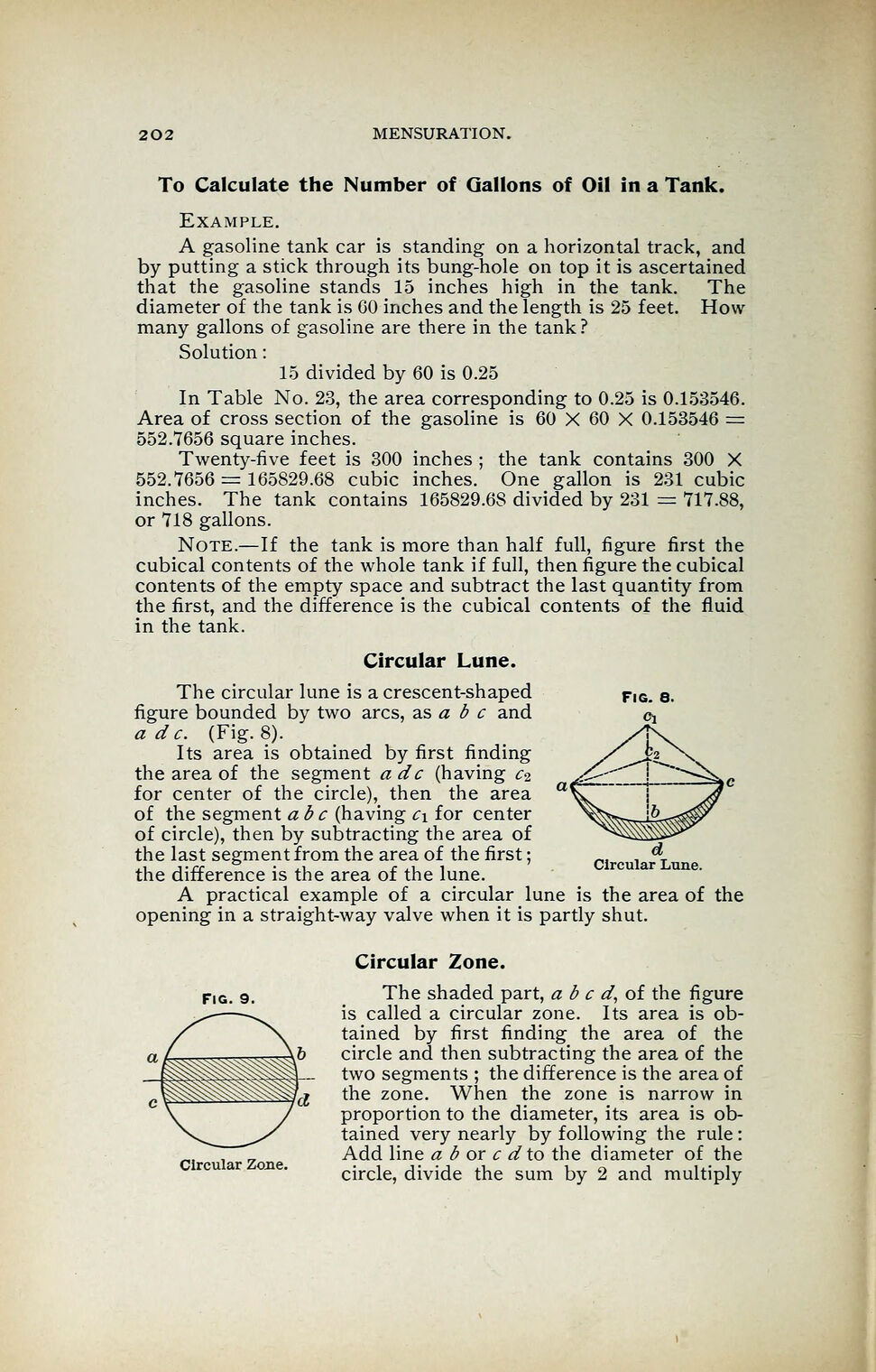
Full resolution (JPEG) - On this page / på denna sida - Mensuration - To calculate the number of gallons of oil in a tank - Circular lune - Circular zone

<< prev. page << föreg. sida << >> nästa sida >> next page >>
Below is the raw OCR text
from the above scanned image.
Do you see an error? Proofread the page now!
Här nedan syns maskintolkade texten från faksimilbilden ovan.
Ser du något fel? Korrekturläs sidan nu!
This page has never been proofread. / Denna sida har aldrig korrekturlästs.
202 MENSURATION.
To Calculate the Number of Gallons of Oil in a Tank.
Example.
A gasoline tank car is standing on a horizontal track, and
by putting a stick through its bung-hole on top it is ascertained
that the gasoline stands 15 inches high in the tank. The
diameter of the tank is GO inches and the length is 25 feet. How
many gallons of gasoline are there in the tank?
Solution
:
15 divided by 60 is 0.25
In Table No. 23, the area corresponding to 0.25 is 0.153546.
Area of cross section of the gasoline is 60 X 60 X 0.153546 =
552.7656 square inches.
Twenty-five feet is 300 inches ; the tank contains 300 X
552.7656 — 165829.68 cubic inches. One gallon is 231 cubic
inches. The tank contains 165829.6S divided by 231 = 717.88,
or 718 gallons.
Note.—If the tank is more than half full, figure first the
cubical contents of the whole tank if full, then figure the cubical
contents of the empty space and subtract the last quantity from
the first, and the difference is the cubical contents of the fluid
in the tank.
Circular Lune.
The circular lune is a crescent-shaped
figure bounded by two arcs, as a b c and
a d c. (Fig. 8).
Its area is obtained by first finding
the area of the segment a dc (having c%
for center of the circle), then the area
of the segment a b c (having c\ for center
of circle), then by subtracting the area of
the last segment from the area of the first
:
.li j-rr •
j.i r A i i Circular Lune.
the difference is the area of the lune.
A practical example of a circular lune is the area of the
opening in a straight-way valve when it is partly shut.
Fig. 9.
Circular Zone.
Circular Zone.
The shaded part, a b c d, of the figure
is called a circular zone. Its area is ob-
tained by first finding the area of the
circle and then subtracting the area of the
two segments ; the difference is the area of
the zone. When the zone is narrow in
proportion to the diameter, its area is ob-
tained very nearly by following the rule :
Add line a b or c dto the diameter of the
circle, divide the sum by 2 and multiply
<< prev. page << föreg. sida << >> nästa sida >> next page >>